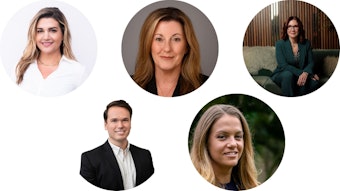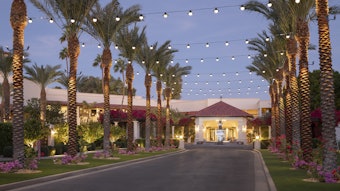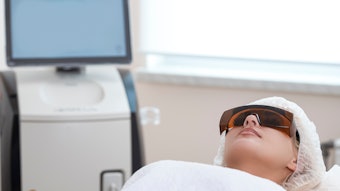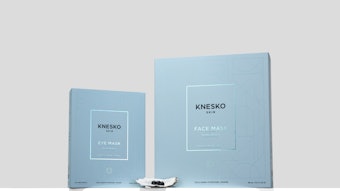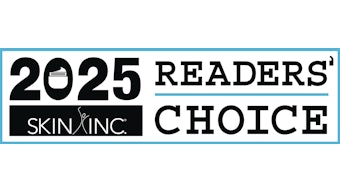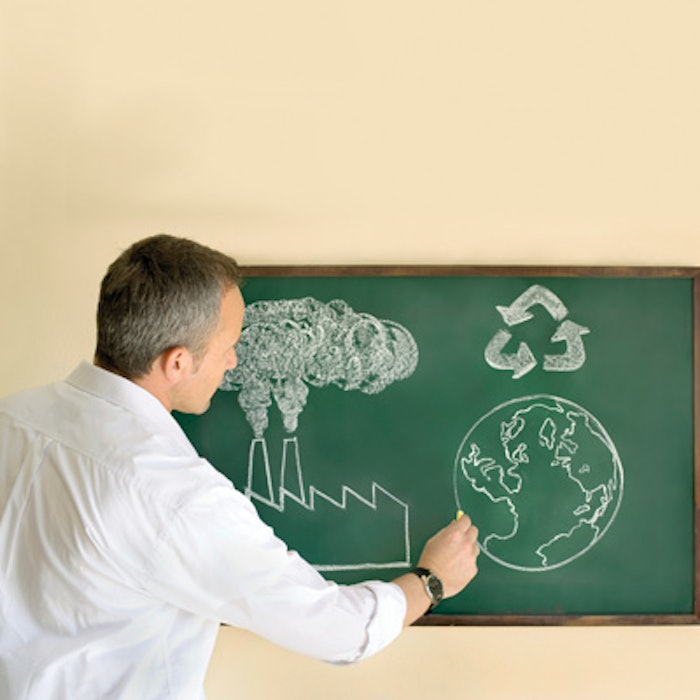
Change is in the air. The new president ran his entire campaign on the notion of change, and it is this concept that keeps the spa business alive and thriving. Spas change their menus to bring in new treatments and services, change policies and procedures to reflect those areas in which they want to improve and have greater control, and personally, every individual changes and grows with every passing day as they learn more about themselves and their environment.
With another year just beginning, now is an excellent time to pause and look at where you have been and all that you have accomplished, as well as to focus on where you want to go. It is through awareness and education that the necessary changes you wish to make can be implemented.
Reflect
Even as people rush ceaselessly to get where they want to go faster and faster, it is important to stop and reflect on where you have been and how you got to where you are today. Make sure to give yourself the recognition you deserve—in essence, keep score. In order to do this, Aveda Fredric’s Institute has developed time lines for the company that show the years and dates of when important events occurred, awards it has won, articles it has appeared in, scholarship contests it has held and other insightful turning points throughout its history. Clients love reading about all the great things Aveda Fredric’s has accomplished, and it gives the company’s team members a vehicle from which to reflect on all that has happened to get the Institute where it is today.
Begin an eco-timeline that allows you to reflect on and keep track of the changes you have made in your business that have helped the environment. Share these strategies with your team, whether they are new or established employees, and let your clients know about them as well, helping them to understand why and how you have done these things. Hopefully, this initiative causes a ripple effect, inspiring your clientele to incorporate some green ideas at home, with their children or in their place of work.
Remind
You have taken the steps to become environmentally conscious and have created your environmental standards. Now, what are you doing to remind yourself to revisit your standards before making purchases, setting goals or creating policies? When confronted with challenges, always take the time to review your standards and goals.
Remind your team about why you have chosen an environmental path. Whether it is a non-smoking policy, paperless communication or a recycling program, any of these can pose a challenge to those who do not want to change. Talk with your staff members about your standards in meetings, and make your clients aware of your eco-friendly initiatives through communications in the form of e-mail or newsletters.
Aveda Fredric’s, for example, makes a point of showing its guests and prospective students the areas it has been working on improving, environmentally speaking. When facilitating a tour, team members let these people know the company has installed features such as a water filtration system and that its water fountains contain purified water.
That has, in turn, encouraged clients and students to bring their own reusable bottles or mugs in with them, helping eliminate the need for disposable water bottles. This, of course, saves money, but more importantly, it has helped reduce the amount of plastic bottles going into landfills. Aveda Fredric’s next goal is to do away with plastic shopping bags, and team members are encouraging clients to bring in their own reusable bags.
Refine
While looking at the big picture, it is important not to lose sight of the little picture—those things everyone does everyday that they may not remember to really even think about.
For example, Aveda Fredric’s recently held a seminar for its staff and students that taught—or re-taught—them all the ins and outs of recycling. To help the key points stick, a few goals specifically pointed out were identified as:
- Making sure everyone knew where all the recycling receptacles were located so they could use them and direct their clients to use them, as well.
- Showing the team how the bins are clearly marked with what waste can go in them—separate containers for glass, plastic, aluminum and paper.
- Educating everyone on the proper way to clean foil, rinse bottles or cans, and remove lids before placing items in the recycle bins.
- Making the signage very clear to serve two purposes: One, it reminds people to recycle, and two, it makes people think about reducing their waste.
- Reminding them how to separate cardboard from trash and break it down so the trash bin isn’t just filled with air.
- Encouraging the team to educate their clients on what they learned.
It is just as important to know what cannot be recycled as what can. Did you know that envelopes with or without windows can be recycled? So can junk mail, magazines, newspapers with inserts, cereal boxes and telephone books. Remember to check the triangle on the bottom of plastic bottles for either a number one or two—those are the plastics that are most easily recyclable—and check with your local recycling service, as other numbers may be accepted in your area. Also note that plastic bags can be recycled at many supermarkets but not in recycling bins, and items with food stains, such as pizza boxes, are not acceptable. Nor are coat hangers, steel scrap, light bulbs, windows or drinking glasses. However, check with your area recycling center to see what their specific rules are, as they can differ greatly by city. You may be pleasantly surprised about what you can be adding in to your recycling bin.
Refine your objectives and your mission. To keep up with technology, its critical to keep moving, changing and adapting. Whether it is online booking, fingerprint-entry systems, or company travel, strive to stay ahead of the times. Several years ago, Aveda Fredric’s bought hybrid cars for company use and encouraged staff and students to carpool. The next step is to install bicycle racks at both of the Institutes to inspire students to go the extra mile and pedal in as a means of transportation.
Redesign
We, as a society, are always looking for the next best thing, and the spa and beauty industries are no different. While that is usually a good thing, it can sometimes cause people to not look at what is within and around them. Remember that if you want to have—and be—the latest and greatest, it takes a lot of education to get there.
Do your research to find out who is doing great things, and get information from them. Seek out the pros or those who have taken the first steps to pave the way for others. You may not be able to make all of the changes you want to now, but you can learn about them and use that knowledge to plan for the future.
Before building the Indianapolis Aveda Fredric’s Institute location, the company’s team members learned all they could about LEED—or Leadership in Energy and Environmental Design—certification, the area of the U.S. Green Building Council that covers green building materials. That information was then used to help push the architect into building a school that was as environmentally conscious as it could be. That was three years ago. In March 2008, that architecture firm relocated and designed its new corporate headquarters to incorporate green design principles with the goal of achieving the LEED Commercial Interiors Gold Rating. Aveda Fredric’s helped inspire them, and now they are carrying on the legacy by educating others.
As an industry, spas also still need to improve upon reducing the use of water, electricity, heating and air conditioning. Look at how your spa can reduce overuse, or abuse, in these areas, and consider networking with plumbers and electricians who are ahead of the game and are installing green technology. Do research to learn about tankless, on-demand hot water heaters, as well as geothermal heating and air conditioning. These may be costly now, but they are sure to be the wave of the future.
Going forward in 2009, take the time to consider redesigning your services in order to take them to another level. Look ahead to trends, but instead of just copying them, find ways to make them more eco-friendly. Many spas are moving toward using products that are earth-friendly, don’t have unnecessary packaging, are recyclable and good for their clients, and don’t use petrochemicals. In order for this trend to keep growing, spa owners have to put pressure on manufacturers to make more environmentally friendly products. It will inspire greater strides across the board.
A year in the balance
There are three questions everyone needs to be asking themselves continually: Do I want it? Do I need it? Can I live without it? We have become a throw-away society—if something breaks or doesn’t work anymore, it just gets tossed in the trash. Gone are the days when people had workbenches and tools in their homes for making repairs. It’s time to change your way of thinking about items you can no longer use.
If you don’t want something anymore, consider giving it to someone who does. Recycle it. There is a school in New Jersey that has a biannual swap day where every family is invited to bring in clothes, shoes, sports equipment, baby gear and other items, swapping them with each other for items they need. No money changes hands—it is all about recycling and helping others. And this “freecycling” trend is just beginning to catch on nationwide. Check out facilities or organizations in your area that hold these types of events. Not only is it much friendlier to your budget, but it’s a tremendous boon for the environmentally conscious. Also, second-hand stores, homeless shelters and organizations such as Goodwill are always great for distributing useful items you no longer want around. Just because you can’t use it anymore doesn’t mean something immediately becomes garbage.
In order to stay on top of the game, business owners constantly have to reflect on where they have been, remind themselves of their mission, refine their goals and keep an eye on the future to redesign systems. It serves to keep challenging yourself personally, too. Through research and forward thinking, you can start moving ahead of the times in order to actually be right on time.
The real value of doing all you can for the future is in raising the bar, inspiring people and motivating leaders to take things to the next level. If people are focused on the ultimate task at hand—reducing their carbon footprint—together we will make a change that is tangible and fruitful for generations to come.
